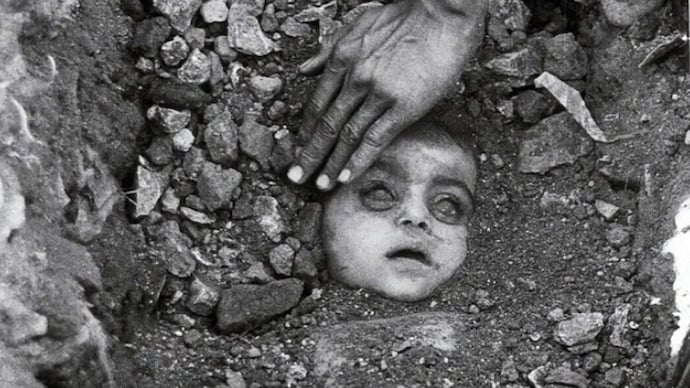Bhopal gas tragedy, the deadliest industrial disaster in history | Retrospective
The Supreme Court on Tuesday rejected the Centre's curative petition seeking additional compensation for victims of the Bhopal gas tragedy. Here is a lookback at the deadliest industrial disaster in history, and its aftermath.
Listen to Story
Advertisement

The Bhopal gas tragedy claimed more than 3,000 lives (India Today archive)
New Delhi , UPDATED: Mar 14, 2023 11:24 IST
Late on the night of December 2, 1984, people dwelling in the slums adjacent to the Union Carbide factory in Bhopal, Madhya Pradesh, woke up to the foul smell of boiled cabbage. It was the first indicator that a highly toxic gas -- methyl isocyanate (MIC) – was leaking from the plant. The killer cloud of gas quickly dispersed across the entire city, spelling untold suffering and death.
advertisement
Now, nearly four decades since the Bhopal gas tragedy claimed more than 3,000 lives, the Supreme Court has rejected the Centre’s curative petition to enhance the compensation awarded to victims. The curative plea sought additional funds of over Rs 7,400 crore over and above the $470 million already paid by Union Carbide Corporation (now owned by Dow Chemicals).
Here is a lookback at the Bhopal gas tragedy, the deadliest industrial disaster in history, and its aftermath:
- On the intervening night of December 2-3, leakage of gas was reported from Union Carbide’s Plant Number C. As per official record, methyl isocyanate got mixed with water used for cooling the plant. The mixture led to generation of volumes of gases, which put tremendous pressure on Tank Number 610.
- The tank cover gave way to building gaseous pressure releasing tonnes of the poisonous gas, which diffused over a large area. Approximately 5 lakh people were exposed to the leakage of methyl isocyanate gas.
- The alarm system of the Union Carbide did not work for hours. No alarm was raised by the factory managers. A flare tower, intended to burn off toxic gases if there was an accidental release, had not been operational for months.
- Those exposed to the poison began coughing, complaining of itching in eyes, skin and facing breathing problems. The gas caused internal haemorrhage, pneumonia and death. The villages and slums in the neighbouring areas of the factory were the worst affected.

- Hospitals, the few that existed in Bhopal back then, were overflowing with thousands of patients unable to breathe, unable to see, crying and begging for relief from their agony. Doctors and staff were unprepared and ill-equipped to deal with the industrial accident.
- The toxic gas leak caused the immediate death of more than 2,000 people. The death toll increased to 5,000 (in government records) while over 1 lakh survivors suffered health complications.

- Alternative estimates put the number of deaths caused directly by the incident in the tens of thousands, with hundreds of thousands experiencing long-term effects from the gas or the infected ground water that has persisted in Bhopal to this day.
- In 1989, Union Carbide settled with the Union government for $470 million in damages. But it wasn’t until 2010 that eight former Indian employees of UCC were convicted of “death by negligence.” However, the main accused of the tragedy, former UCC chairman Warren Anderson, evaded arrest and died a free man in the United States in 2014.
- On December 3, 2010, the 26th anniversary of the Bhopal gas disaster, the Centre filed a curative petition in the Supreme Court, demanding additional compensation for the victims. The court began hearing the petition in August last year.
- The survivors of the tragedy have been fighting for long for adequate compensation and proper medical treatment for ailments caused by the toxic gas leak.




